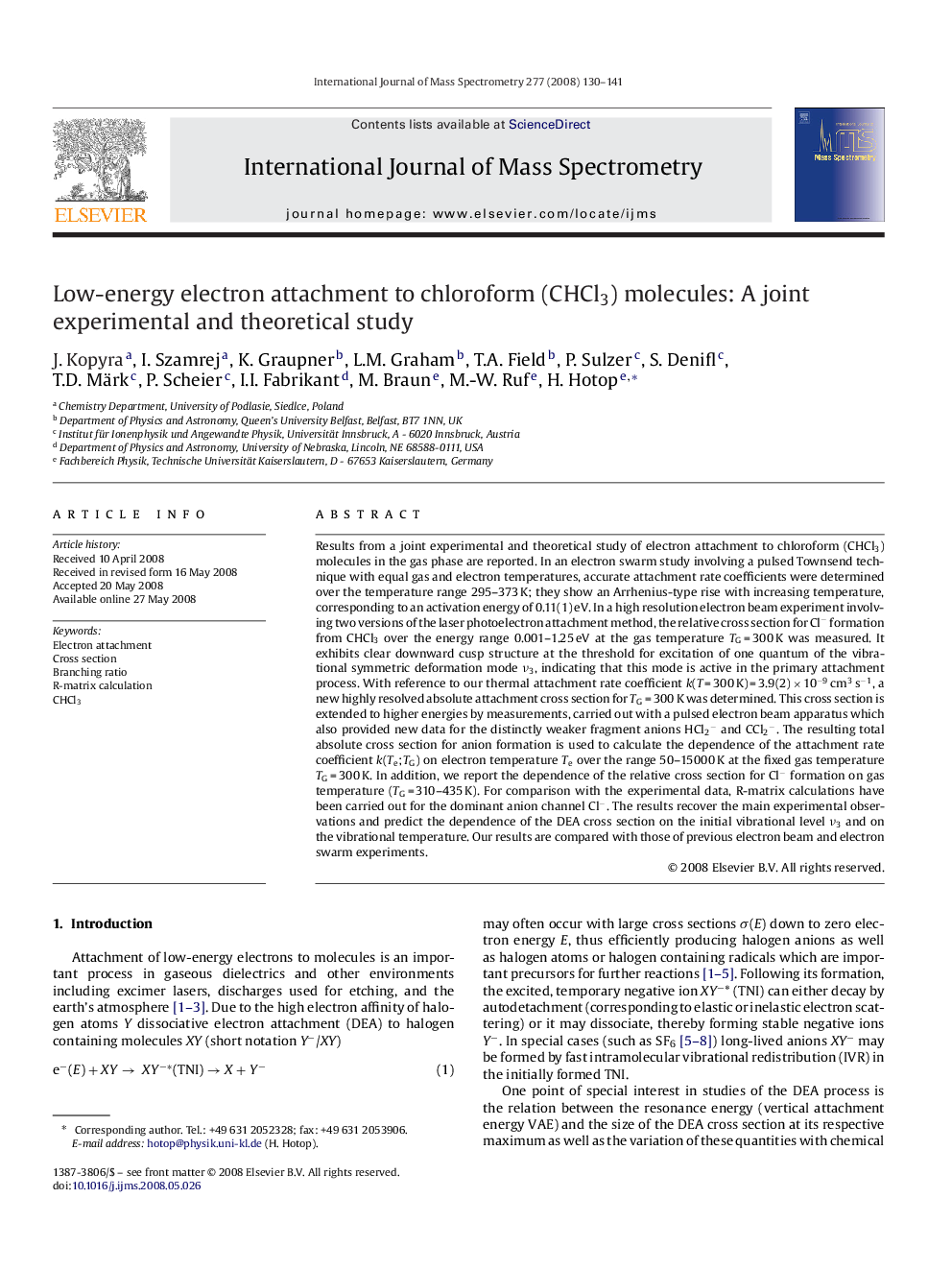| کد مقاله | کد نشریه | سال انتشار | مقاله انگلیسی | نسخه تمام متن |
|---|---|---|---|---|
| 1192450 | 1492351 | 2008 | 12 صفحه PDF | دانلود رایگان |

Results from a joint experimental and theoretical study of electron attachment to chloroform (CHCl3) molecules in the gas phase are reported. In an electron swarm study involving a pulsed Townsend technique with equal gas and electron temperatures, accurate attachment rate coefficients were determined over the temperature range 295–373 K; they show an Arrhenius-type rise with increasing temperature, corresponding to an activation energy of 0.11(1) eV. In a high resolution electron beam experiment involving two versions of the laser photoelectron attachment method, the relative cross section for Cl− formation from CHCl3 over the energy range 0.001–1.25 eV at the gas temperature TG = 300 K was measured. It exhibits clear downward cusp structure at the threshold for excitation of one quantum of the vibrational symmetric deformation mode ν3, indicating that this mode is active in the primary attachment process. With reference to our thermal attachment rate coefficient k(T = 300 K) = 3.9(2) × 10−9 cm3 s−1, a new highly resolved absolute attachment cross section for TG = 300 K was determined. This cross section is extended to higher energies by measurements, carried out with a pulsed electron beam apparatus which also provided new data for the distinctly weaker fragment anions HCl2− and CCl2−. The resulting total absolute cross section for anion formation is used to calculate the dependence of the attachment rate coefficient k(Te;TG) on electron temperature Te over the range 50–15000 K at the fixed gas temperature TG = 300 K. In addition, we report the dependence of the relative cross section for Cl− formation on gas temperature (TG = 310–435 K). For comparison with the experimental data, R-matrix calculations have been carried out for the dominant anion channel Cl−. The results recover the main experimental observations and predict the dependence of the DEA cross section on the initial vibrational level ν3 and on the vibrational temperature. Our results are compared with those of previous electron beam and electron swarm experiments.
Journal: International Journal of Mass Spectrometry - Volume 277, Issues 1–3, 1 November 2008, Pages 130–141